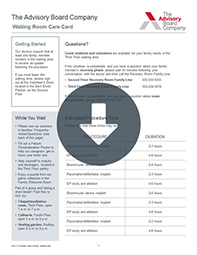Auto logout in seconds.
Continue LogoutEDs were busier than ever in 2016—and fewer of their patients arrived seeking non-urgent care, according to the latest CDC data.
Why advertising ED wait times shouldn't be an EMTALA violation
ED use hits record high
The CDC data, which do not include visits to freestanding emergency departments or urgent care centers, show ED visits reached a record high of 145.6 million in 2016, compared with 136.9 million visits in 2015.
Children and senior patients accounted for the majority of the visits, with patients ages 15 and younger accounting for 18.8% of visits and patients ages 65 and older responsible for 15.9% of visits. Patients most commonly visited the ED for stomach pain, which was responsible for 8.6% of visits, and chest pain, which was responsible for 5.2% of visits, according to CDC.
Even as overall visits increased, the share of patients who visited the ED for non-urgent medical issues decreased from 5.5% in 2015 to 4.3% in 2016.
Despite the increase in patient volumes, ED wait times actually fell, the data show. Nearly three-quarters of ED patients in 2016 were seen by a provider within an hour of arriving at the ED, and more than one-third had wait times of less than 15 minutes.
The data also show that more than half of ED visits in 2016 occurred outside of traditional business hours and that almost 70% of hospital inpatients were initially processed through an ED, according to CDC.
What the data mean for future ED care, policies
Hospitals and payers have long urged patients with non-urgent symptoms to get care from primary care physicians, retail clinics, or urgent care centers instead of from expensive EDs, and the data suggest those efforts are beginning to pay off, Healthcare DIVE reports.
Vidor Friedman, president of the American College of Emergency Physicians, said the increase in ED visits also highlights the critical role that EDs play in health care delivery, especially since the majority of visits occur after traditional office hours, when most doctors' offices are closed.
"Emergency care is growing more complex," Friedman said in a statement, "and some of the larger trends that will impact emergency department planning and resource discussions include the rising number of elderly patients, preventing and treating opioid abuse and the role of the emergency department in treating and managing patients with mental illness" (Gooch, Becker's Hospital Review, 4/5; Masterson, Healthcare Dive, 4/8; WPVI, 4/5).
Primer series: How to address avoidable ED utilization
Are specific patient populations making up a significant proportion of avoidable ED visits at your organization? In each primer, we profile organizations who have set up targeted programs and feature operational, staffing, and funding information.
Don't miss out on the latest Advisory Board insights
Create your free account to access 1 resource, including the latest research and webinars.
Want access without creating an account?
You have 1 free members-only resource remaining this month.
1 free members-only resources remaining
1 free members-only resources remaining
You've reached your limit of free insights
Become a member to access all of Advisory Board's resources, events, and experts
Never miss out on the latest innovative health care content tailored to you.
Benefits include:
You've reached your limit of free insights
Become a member to access all of Advisory Board's resources, events, and experts
Never miss out on the latest innovative health care content tailored to you.
Benefits include:
This content is available through your Curated Research partnership with Advisory Board. Click on ‘view this resource’ to read the full piece
Email ask@advisory.com to learn more
Click on ‘Become a Member’ to learn about the benefits of a Full-Access partnership with Advisory Board
Never miss out on the latest innovative health care content tailored to you.
Benefits Include:
This is for members only. Learn more.
Click on ‘Become a Member’ to learn about the benefits of a Full-Access partnership with Advisory Board
Never miss out on the latest innovative health care content tailored to you.

